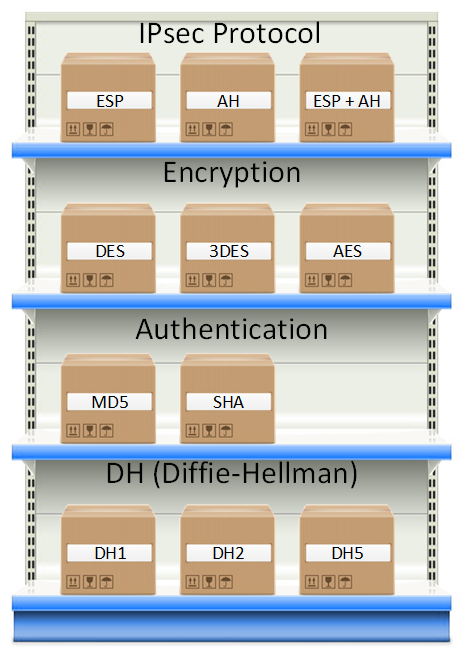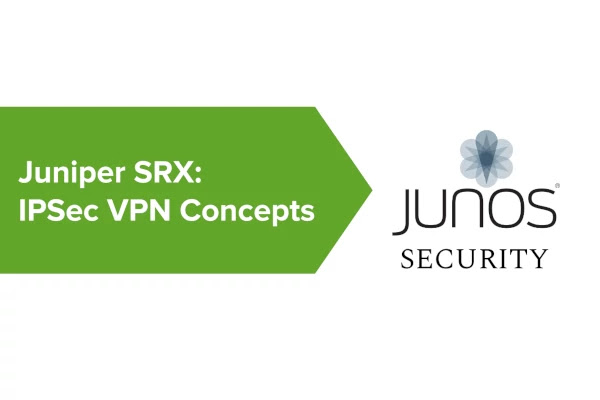Featured
Table of Contents
- – What Is Ipsec And How Ipsec Does The Job Of Sec...
- – What Is Ipsec (Internet Protocol Security)?
- – Internet Protocol Security (Ipsec)
- – Ipsec (Internet Protocol Security) Vpn
- – About Ipsec Vpn Negotiations
- – Ip Security (Ipsec)
- – Overview Of Ipsec
- – Unifi Gateway - Site-to-site Ipsec Vpn
- – What Is Internet Protocol Security? Applicat...
- – - Overview Of Ipsec -
What Is Ipsec And How Ipsec Does The Job Of Securing ...
IPsec (Internet Procedure Security) is a structure that helps us to secure IP traffic on the network layer. Why? since the IP procedure itself does not have any security features at all. IPsec can safeguard our traffic with the following features:: by encrypting our information, no one other than the sender and receiver will have the ability to read our data.

By calculating a hash value, the sender and receiver will have the ability to inspect if modifications have actually been made to the packet.: the sender and receiver will verify each other to make sure that we are actually talking with the device we mean to.: even if a packet is encrypted and authenticated, an aggressor might attempt to catch these packages and send them again.
What Is Ipsec (Internet Protocol Security)?
As a framework, IPsec uses a range of procedures to execute the functions I described above. Here's a summary: Do not fret about all the boxes you see in the photo above, we will cover each of those. To give you an example, for file encryption we can select if we wish to use DES, 3DES or AES.
In this lesson I will begin with a summary and then we will take a better look at each of the components. Prior to we can secure any IP packages, we require 2 IPsec peers that construct the IPsec tunnel. To develop an IPsec tunnel, we utilize a protocol called.
Internet Protocol Security (Ipsec)
In this phase, an session is established. This is also called the or tunnel. The collection of criteria that the two devices will use is called a. Here's an example of two routers that have actually developed the IKE stage 1 tunnel: The IKE phase 1 tunnel is just utilized for.
Here's an image of our two routers that completed IKE phase 2: When IKE phase 2 is finished, we have an IKE stage 2 tunnel (or IPsec tunnel) that we can use to safeguard our user data. This user information will be sent out through the IKE phase 2 tunnel: IKE constructs the tunnels for us however it doesn't validate or secure user data.
Ipsec (Internet Protocol Security) Vpn


I will describe these two modes in information later in this lesson. The whole procedure of IPsec includes 5 steps:: something needs to trigger the production of our tunnels. When you set up IPsec on a router, you utilize an access-list to tell the router what information to safeguard.
Whatever I describe below uses to IKEv1. The primary purpose of IKE phase 1 is to establish a protected tunnel that we can utilize for IKE stage 2. We can break down phase 1 in three simple actions: The peer that has traffic that should be safeguarded will start the IKE phase 1 settlement.
About Ipsec Vpn Negotiations
: each peer needs to show who he is. 2 typically utilized alternatives are a pre-shared key or digital certificates.: the DH group determines the strength of the secret that is used in the essential exchange process. The greater group numbers are more safe and secure however take longer to calculate.
The last action is that the two peers will verify each other using the authentication method that they agreed upon on in the negotiation. When the authentication succeeds, we have completed IKE phase 1. Completion outcome is a IKE stage 1 tunnel (aka ISAKMP tunnel) which is bidirectional.
Ip Security (Ipsec)
This is a proposition for the security association. Above you can see that the initiator utilizes IP address 192. 168.12. 1 and is sending out a proposition to responder (peer we want to connect to) 192. 168.12. 2. IKE uses for this. In the output above you can see an initiator, this is a special worth that identifies this security association.
0) and that we are using primary mode. The domain of interpretation is IPsec and this is the first proposition. In the you can discover the attributes that we desire to use for this security association. When the responder receives the first message from the initiator, it will reply. This message is used to notify the initiator that we agree upon the attributes in the transform payload.
Overview Of Ipsec
Given that our peers concur on the security association to utilize, the initiator will start the Diffie Hellman essential exchange. In the output above you can see the payload for the crucial exchange and the nonce. The responder will likewise send out his/her Diffie Hellman nonces to the initiator, our 2 peers can now determine the Diffie Hellman shared key.
These 2 are utilized for identification and authentication of each peer. The initiator begins. And above we have the 6th message from the responder with its recognition and authentication information. IKEv1 primary mode has actually now finished and we can continue with IKE phase 2. Prior to we continue with phase 2, let me show you aggressive mode first.
Unifi Gateway - Site-to-site Ipsec Vpn
You can see the change payload with the security association qualities, DH nonces and the recognition (in clear text) in this single message. The responder now has whatever in needs to create the DH shared crucial and sends some nonces to the initiator so that it can also calculate the DH shared key.
Both peers have everything they require, the last message from the initiator is a hash that is utilized for authentication. Our IKE stage 1 tunnel is now up and running and we are prepared to continue with IKE phase 2. The IKE stage 2 tunnel (IPsec tunnel) will be actually used to safeguard user information.
What Is Internet Protocol Security? Applications And Benefits
It secures the IP package by calculating a hash value over almost all fields in the IP header. The fields it leaves out are the ones that can be altered in transit (TTL and header checksum). Let's begin with transport mode Transportation mode is basic, it just adds an AH header after the IP header.
With tunnel mode we add a brand-new IP header on top of the original IP packet. This could be useful when you are utilizing personal IP addresses and you need to tunnel your traffic over the Internet.
- Overview Of Ipsec -
It also provides authentication however unlike AH, it's not for the whole IP package. Here's what it looks like in wireshark: Above you can see the initial IP package and that we are utilizing ESP.
The original IP header is now likewise encrypted. Here's what it appears like in wireshark: The output of the capture is above is similar to what you have seen in transport mode. The only difference is that this is a brand-new IP header, you do not get to see the original IP header.
Table of Contents
- – What Is Ipsec And How Ipsec Does The Job Of Sec...
- – What Is Ipsec (Internet Protocol Security)?
- – Internet Protocol Security (Ipsec)
- – Ipsec (Internet Protocol Security) Vpn
- – About Ipsec Vpn Negotiations
- – Ip Security (Ipsec)
- – Overview Of Ipsec
- – Unifi Gateway - Site-to-site Ipsec Vpn
- – What Is Internet Protocol Security? Applicat...
- – - Overview Of Ipsec -
Latest Posts
The 6 Best Vpn Stocks To Buy Right Now For August 2023
7 Best Vpn Services For Privacy & Security In 2022
10 Best Vpn Services For Startups 2023 - Truic
More
Latest Posts
The 6 Best Vpn Stocks To Buy Right Now For August 2023
7 Best Vpn Services For Privacy & Security In 2022
10 Best Vpn Services For Startups 2023 - Truic